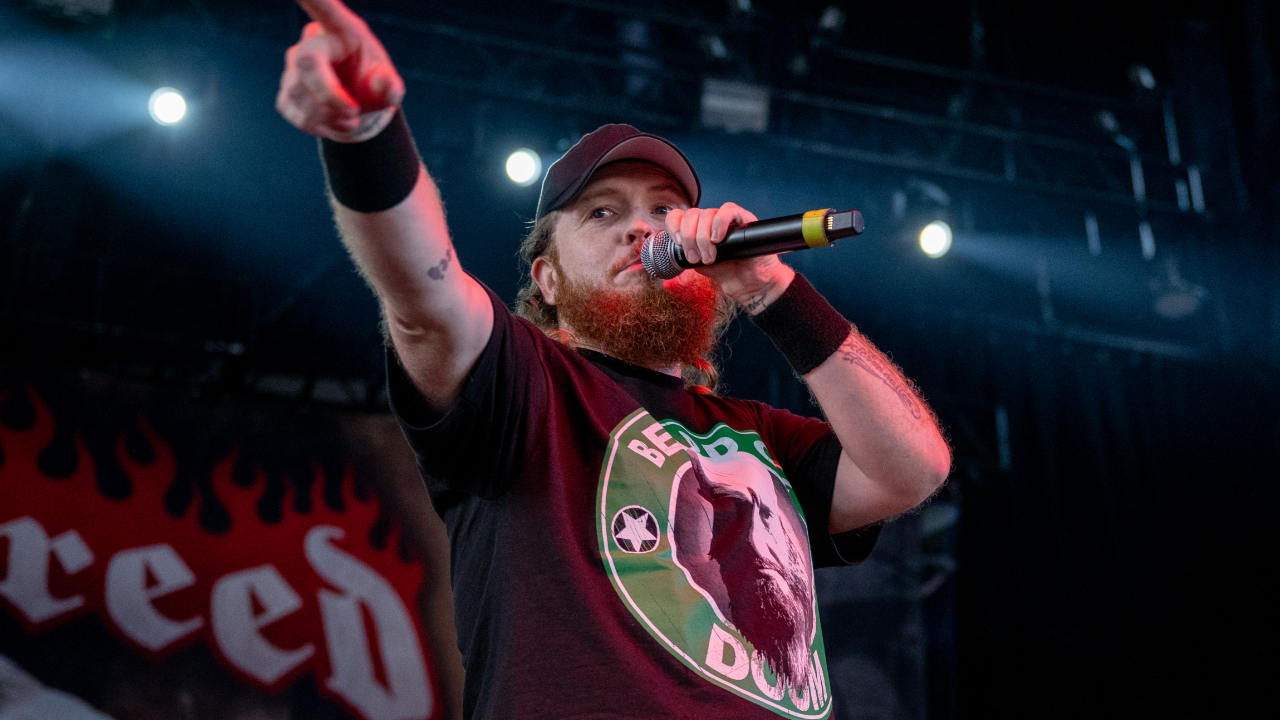“Brent had an Iron Maiden jacket on so I went over to him to talk to him and he was like, ‘Hey you’re that crazy drummer dude’”: The chaotic birth of prog metal giants Mastodon
How Mastodon crawled from the Atlanta underground metal scene to become one of the most important bands of the 21st century
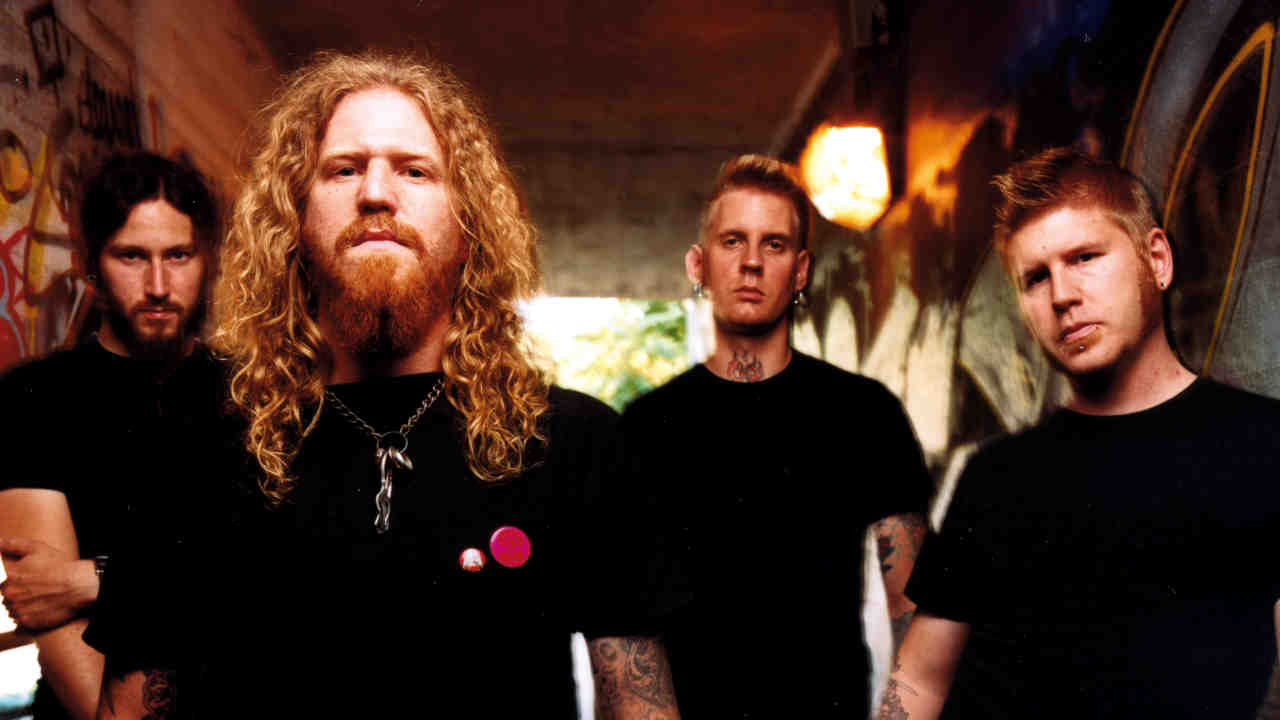
All bands need to start somewhere, and for Mastodon it was with 2000’s 9 Song Demo, reissued six years later as Call Of The Mastodon. In 2014, the prog metal band looked back on the roots of their story.

All too often, a compilation of a band’s early recordings is nothing more than a cash cow for a greedy record label, released when a band is dragging its feet over a new album or rushed out in panic if they have just moved on to a new label. And true enough, Mastodon’s last release for Relapse in 2006 before moving to Warners to release Blood Mountain was an early doors compilation. However, Call Of The Mastodon – which draws together the Slick Leg 7” and the Lifesblood EP (both initially released in 2000) – is simply an awesome record in its own right.
Not only is it a treat for those who love the band’s earlier, heavier releases Remission (2002) and Leviathan (2004), but it is an essential piece of metal history, showing that one of the best groups of the last 21st century arrived on the scene pretty much fully formed – shooting out of the traps like an atomic greyhound.
All the material here, astoundingly, is in its essence Mastodon’s first nine-track demo. True, it no longer features the original vocalist Eric Saner, but this is how good they were the first time the record button was ever pressed down during their first trip to the studio literally just months after meeting. What is even more amazing is how quickly the band came together. Bill Kelliher and Brann Dailor had been in Atlanta for less than a week, before meeting their future bandmates Brent Hinds and Troy Sanders at a gig, and it’s not exactly what you’d call a small city.
Atlanta, Georgia doesn’t have the same profile in Europe as Los Angeles or New York, but given that it is the ninth biggest city in the States most people know a few things about it. For example, a lot of people have heard of the fizzy drink-themed attraction World Of Coca-Cola and the Georgia Aquarium – essentially the world’s largest fish tank. The TV series The Walking Dead, set in and around the sprawling city, boosted knowledge of Atlanta in other ways. Fans of the gory zombie fest will be aware that the first season reaches its viscera-slicing, eye-gouging, brain-bursting climax at the Atlanta Center For Disease Control – a scientific facility which oddly enough plays a role in the Mastodon story.
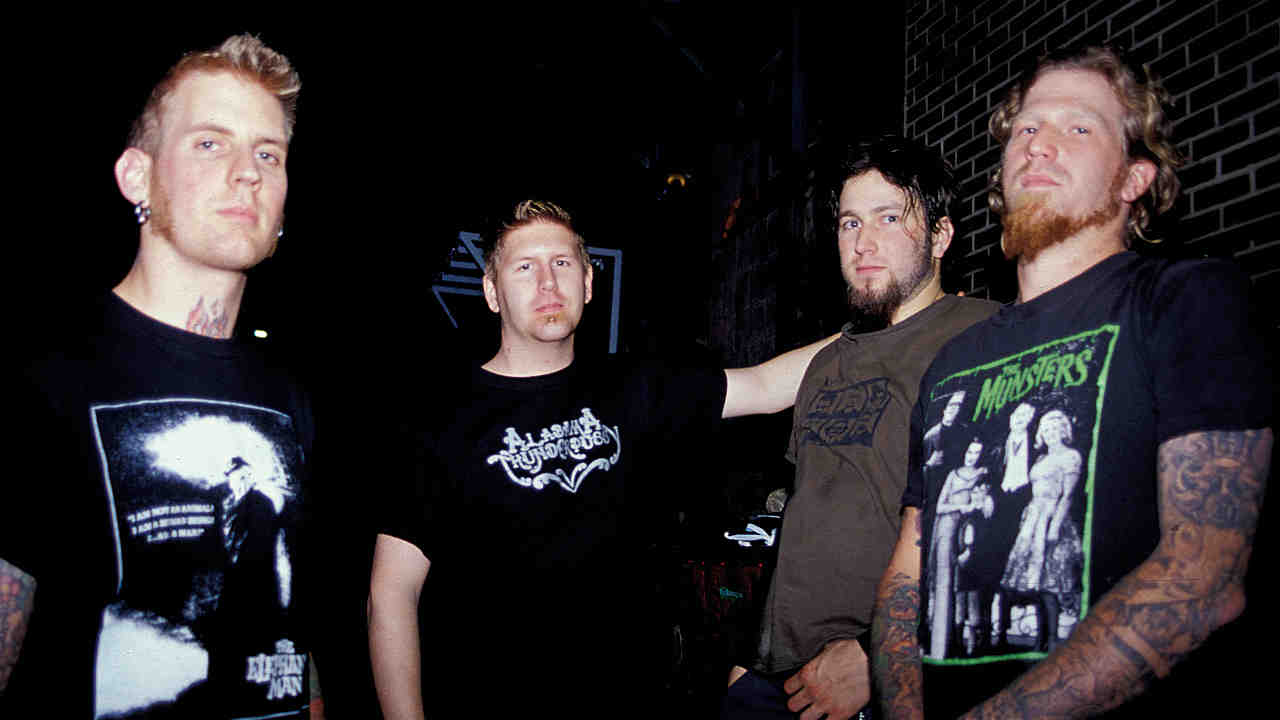
Brann Dailor, the band’s octopus-armed drummer and de facto leader explains: “Bill and I moved to Atlanta in 2000. His wife had a good government job at the Center For Disease Control. We’d just got back off tour as the rhythm section of Today Is The Day. We’d seen Europe with Neurosis and Voivod and we felt that we couldn’t just go back to Rochester where it was covered in snow. We were young enough to start over, so we moved down there to start a new band.”
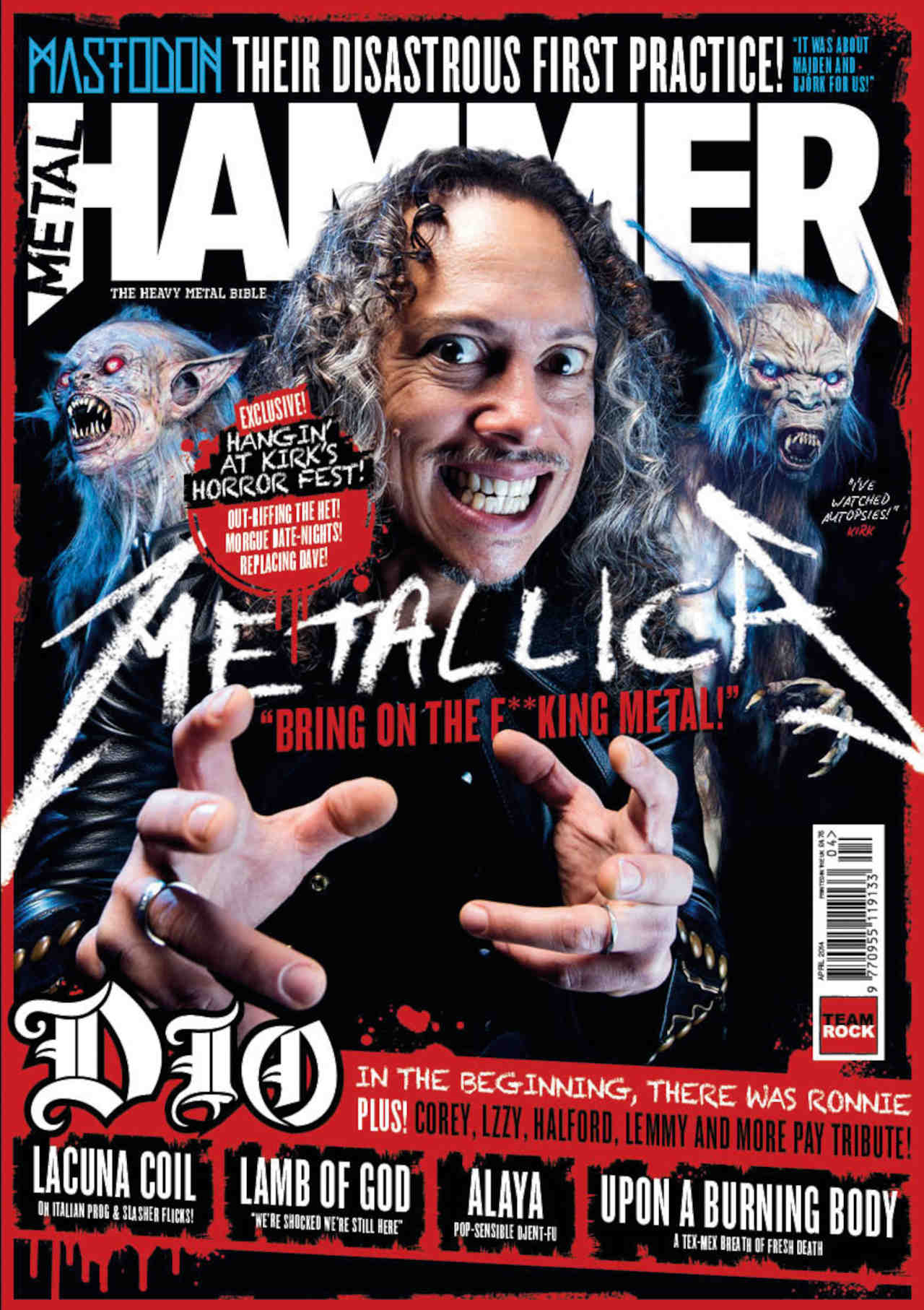
It wasn’t long before Bill and Brann met their future bandmates. Troy and Brent were playing their last ever gig as Four Hour Fogger supporting High On Fire at a house show the same week the former Today Is The Day guys arrived in town. Brann explains: “Brent had an Iron Maiden jacket on so I went over to him to talk to him and he was like, ‘Hey you’re that crazy drummer dude, I heard you were in town with another Today Is The Day dude. Our band’s breaking up, this was our last show. So me and Troy are ready to go.’ So that was cool. Everything just came together so fast.”
It wasn’t all plain sailing, however. Brent, the mercurially talented lead guitarist of the band, turned up to the first practice in a really bad way – heavily drunk to cope with heroin withdrawal – and could barely pick his instrument up.
Brann says: “It wasn’t good. I wanted to do something fast and wild and he was like, ‘I wanna do stuff like this’ WAHHHHH! [mimes hitting one note again and again slowly] I was like, ‘Dude, I don’t know what that is.’ I mean, I liked him, he was funny and cool but he was supposed to be the best guitar player in Atlanta… well, not from what was on display that day. But then he came by the next day and picked up an acoustic guitar and started riffing this crazy shit. And then I was like, ‘Awesome! Let’s go straight to the rehearsal room now and start playing!’”
But despite nearly not happening at all, it was clear that they had found kindred spirits in one another. The band’s affable bassist Troy Sanders explains that they had a plan right from the start – which would go some way to explaining why the Call Of The Mastodon material is so accomplished: “One of the things that I find about my bandmates is that the four of us have this unique chemistry that stems from us being inspired by every genre under the entire umbrella of music itself. So we’re not all listening to heavy rock’n’roll all the time. We’re not always listening to Country & Western. Our record collections are completely diverse.
“When we joined this band we looked through each others’ CD booklets and were like, ‘Sweet, Björk, Willie Nelson, Iron Maiden, Thin Lizzy, alright! I like your tastes already,’” Troy continues. “Flip open Bill’s book and see Black Flag and Radiohead and be like, ‘Yeah, cool!’ When each of us contains thousands of influences then it’s going to come out in the music to some degree allowing Mastodon not to be a one-dimensional band. So that immediate amount of respect for one another as regards to being music fans was set as soon as we met.”
After that, it was only a matter of inviting Eric Saner to be their vocalist and they were away.
They wrote a clutch of songs and set about recording their first demo. Matt Washburn of Ledbelly Studios in Atlanta was the man to produce all of the songs that would make it on to Call Of The Mastodon and claims it was just “luck of the draw” that they rolled up at his studio: “The first meeting was them showing up at the studio to start recording. We really didn’t plan it out, it just happened. The guys in the band were all very cool and down to earth. No attitudes.
“Back in those days, bands didn’t book studio time unless they had all their songs fully worked out. Mastodon were exactly the same: they knew the songs, how they wanted them to sound, and they just did their thing. These days, it’s hard to find a good rock band that wants to track live. But these guys didn’t even conceive of a different way to do it. We set up drums, bass, and both guitars and just rolled tape. We added vocals, some guitar solos and sound effects/samples after.”
He laughs when asked what they were like and says: “Well, just like all good ‘boy’ bands, they have the classic lineup: Bill is the serious one, Brent is the crazy one, Troy is the quiet one, and Brann thinks he is the good- looking one. Eric was extremely serious if I remember correctly. These guys liked to have a good time, and beer and other party favours were in attendance. But nothing to excess. It never got sloppy. One night after wrapping up a session, their van was stuck in the drive. It was one of Georgia’s rare winter storms and the drive was completely iced over. I remember all of us out there doing something to free the vehicle. I was pouring table salt and kitty litter behind the tyres.”
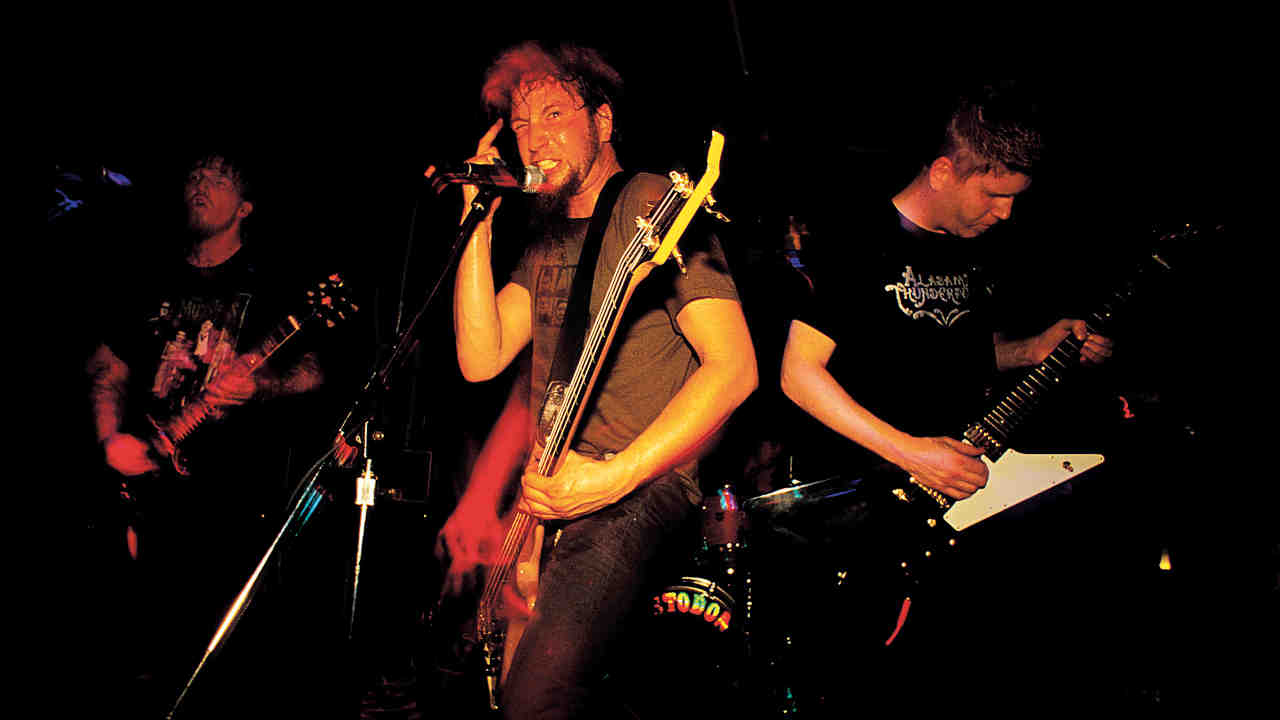
Because of Bill and Brann’s history with Relapse via Today Is The Day, they went to Relapse initially with their demo. Gordon Conrad, who was the label manager at the time, is only happy to confirm that Mastodon arrived as the fully formed package: “The demo was largely what you’re hearing on Call Of The Mastodon. A raw, monster of a recording displaying a supremely talented bunch of dudes playing a form of metal so fresh and unique and cool that it couldn’t and wouldn’t be ignored. Within the first few minutes of hearing Shadows That Move, myself and a few others at the label knew immediately that we needed to work with the band. We simply had to.”
Gordon explains the difference between the demo and the Call Of The Mastodon album:
“The album isn’t a rerecording of the demo in the most traditional sense. The majority of music on it is actually from the demo. So the nine-demo session with Eric Saner became Lifesblood and the Slick Leg 7”. The band simply removed Eric’s vocals and added Troy and Brent and Bill’s to the session, remastered it and repackaged it. They then worked on that updated session (re-recorded some vocals, perhaps did some guitar overdubs, remastered, repackaged, etc) to turn it into Call Of The Mastodon.”
To fully know where a band is now, it’s often necessary to understand where they have come from. And for all those eagerly awaiting the release of Mastodon’s sixth album later this year, there has never been a better time to acquaint yourself with the sheer might of their opening statement: Call Of The Mastodon.
Originally published in Metal Hammer 255, March 2014

